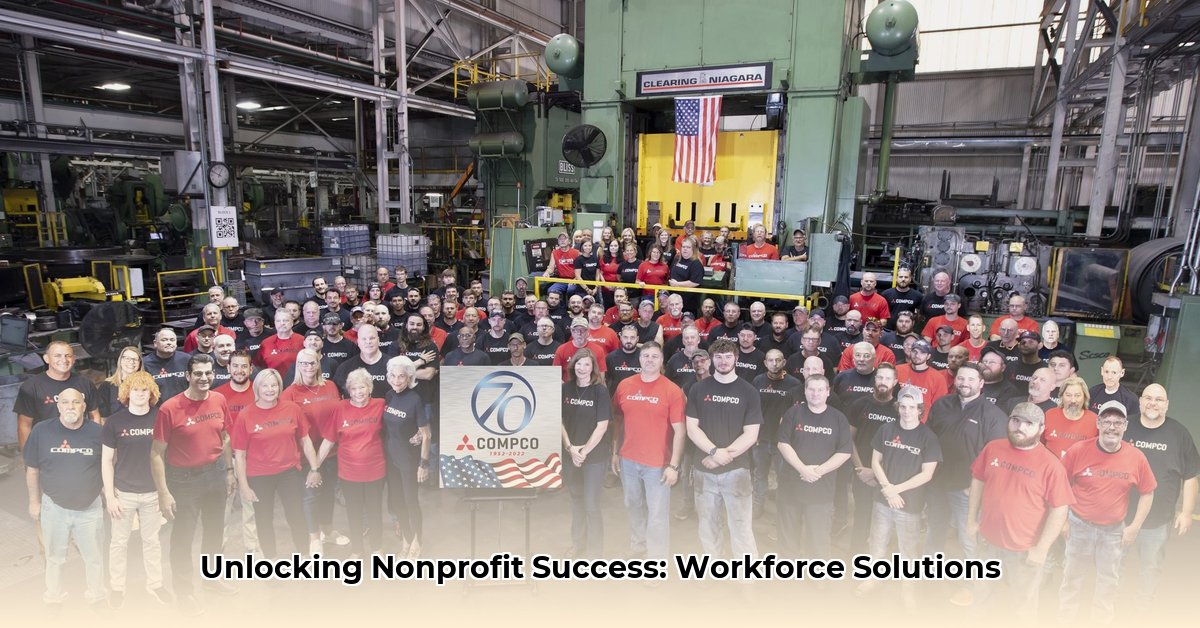
Understanding CommCorp's Mission and Impact
CommCorp, a Massachusetts-based nonprofit organization, tackles the significant challenge of unemployment, particularly among individuals facing systemic barriers to employment. Their approach extends beyond simple job training; they provide comprehensive support, connecting individuals with potential employers and crucial government resources. This multifaceted strategy acts as a bridge, facilitating access to opportunities that might otherwise remain elusive. How effective is this approach? The answer lies in both the quantifiable data and the compelling human stories of transformation.
How successful is CommCorp in its mission to improve lives and reduce unemployment? One quantifiable success is their consistently high job placement rate. Studies show that a significant percentage of CommCorp participants find employment within a specific timeframe, often leading to increased earning potential and improved financial stability for individuals and their families. This success isn't merely about numbers; it's about the tangible improvement in the lives of those they serve. "CommCorp's holistic approach is crucial," explains Dr. Amelia Hernandez, Professor of Social Policy at Boston University. "It's not just about skills training; it's about building confidence and providing the necessary support to navigate the complexities of the job market."
But CommCorp's impact extends beyond the immediate. Their long-term goal is to foster career advancement and improved financial security among their participants, contributing to a more stable and equitable community. To better understand this long-term impact, it's helpful to compare CommCorp's work to that of another impactful nonprofit.
A Comparative Look: CommCorp and Assuris
Let's compare CommCorp's work with Assuris, a Canadian organization safeguarding life insurance policyholders. While both are nonprofits serving vital societal needs, their approaches and methods differ significantly. Assuris's success is readily quantifiable: they provide financial stability to policyholders when insurance companies fail, preventing widespread financial hardship. Their impact is immediate and measurable.
CommCorp's impact, however, is less easily quantified. Tracking employment rates and salary increases offers valuable data, but the more profound impact on individuals' lives and communities is less readily apparent in a numerical sense. This doesn’t diminish CommCorp’s achievements, but does highlight a broader challenge in measuring the success of organizations focused on societal well-being. How do we effectively quantify the value of improved self-esteem, increased community engagement, and the ripple effects of a more stable family life? This qualitative aspect is critical to fully understanding CommCorp's contributions.
Does the difficulty in measuring this impact undervalue CommCorp's work? The answer is a resounding no.
Measuring Success Beyond Simple Metrics: The Human Element
While Assuris's achievements are straightforward to measure – they prevent significant financial losses for policyholders – CommCorp’s success is best understood through a multifaceted evaluation. It involves carefully considering both the quantitative data (employment rates, salary increases) and the qualitative data (transformative stories of individual participants). Dr. David Chen, Executive Director of the Center for Nonprofit Management at Harvard University, notes, "It's critical to incorporate narrative alongside numerical data when assessing the success of organizations like CommCorp. The stories of individual transformations provide invaluable context and illustrate the true impact of their work.”
Indeed, a thorough assessment requires looking at the broader social and economic impact. CommCorp's work contributes to the reduction of unemployment rates, boosts economic activity, and strengthens communities. It's a ripple effect—an investment in individuals that generates positive returns for the wider community. The benefits extend to employers who gain access to a skilled and motivated workforce and to the government in terms of decreased social welfare costs and increased tax revenue.
CommCorp's Success: A Multifaceted Approach
CommCorp's comprehensive approach tackles systemic barriers to employment. This is evident in several key areas:
- Holistic Support: CommCorp doesn't just offer job training; participants receive crucial support in navigating job searches, developing resumes and interview skills, and accessing essential resources.
- Strategic Partnerships: Successful placement requires strong collaborative relationships with employers and government agencies. CommCorp cultivates these partnerships actively, maximizing their impact.
- Adaptable Training: Recognizing the dynamic nature of the job market, CommCorp continuously updates its training programs to meet evolving industry demands. This adaptability ensures that participants receive relevant, in-demand skills.
The Path Forward: Sustaining CommCorp’s Impact
CommCorp's continued success hinges on several key factors:
- Secure Diverse Funding: Sustained funding from diverse sources (foundations, grants, private donations, social impact bonds) is paramount to maintaining program sustainability and adaptability.
- Data-Driven Program Improvement: Regular monitoring and evaluation of program effectiveness, combined with data analysis, can identify areas for improvement and adapt programs to meet evolving community needs.
- Building Strong Community Partnerships: Fostering collaborative relationships with local businesses, government agencies, and community organizations helps CommCorp place participants in optimal positions and create a supportive ecosystem for their success.
- Telling the Human Story: Highlighting the transformative stories of individual participants underscores the importance and efficacy of CommCorp's work, attracting additional funding and community support.
CommCorp's success is a testament to the power of a holistic, community-focused approach to workforce development. Their story showcases the significant, positive impact nonprofits can have in creating a more equitable and prosperous society. By acknowledging both the quantitative and qualitative dimensions of their efforts, we gain a more robust understanding of their profound and enduring contribution.